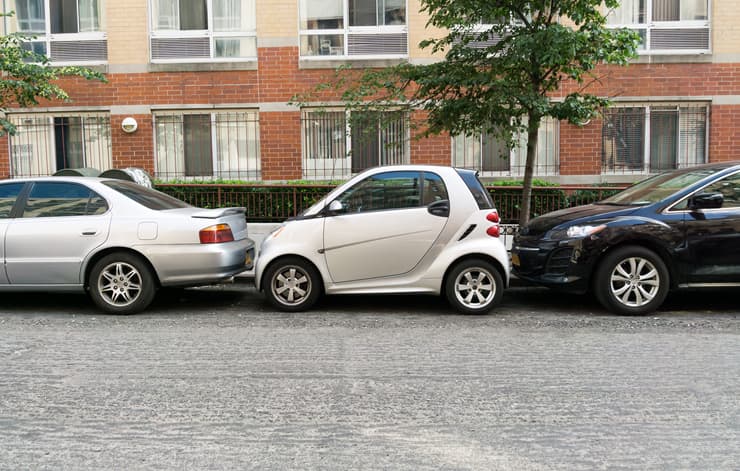Who Is at Fault in a Car Accident When Backing Up?

Though we may commonly turn to a person who was speeding to place fault in an accident, not all collisions occur at top speeds. Speeding-related accidents cost Americans roughly $40 billion each year, but what about slower sideswipes? Also, whose fault is it when you’re backing up?
This situation isn’t as straightforward as some other traffic violations. There are several factors that play into this. Understanding who is at fault regarding accidents in parking lots can be convoluted but not impossible to understand.
Do you have questions about an auto accident? Jack Bernstein, Injury Attorneys is here to help.
Backing up Situations
There are several instances when you have to move your vehicle in reverse. Most of these revolve around backing out of a parking spot, but not all of them. The more common situations would be:
- Backing out of a parking spot
- Backing out of a driveway
- Performing a 3-point turn
- Backing up due to road closure
- Being instructed to back up from law enforcement or safety personnel
These situations arise almost daily, but we don’t often consider them peak times for an accident. However, these types of driving procedures give rise to accidents because people don’t consider them threatening.
Common Back up Accidents
According to the National Safety Council, tens of thousands of accidents happen in parking lots. Many of those occur when one or more drivers are backing up. These situations could be avoided if people understood who has the right of way in a parking lot.
An accident in a parking lot isn’t the only place. Some of the most frequent occurrences are in the other places we’ve just discussed. The top accidents when backing up a car include the following:
- Backing into a passing car
- Backing into another vehicle that is also backing up
- Backing into a parked park
Now that we have a better understanding of the scenarios, let’s take a closer look at what determines who is at fault.
Determining Fault
When backing up a car, there are several factors that can decide who is liable for damages that occur. Four main circumstances factor into this determination.
Stopped or Moving
One of the first things to determine in this scenario is which vehicles were stopped and which ones were moving. In most situations, if the individual who was backing up a car was the person moving, they were at fault. However, this isn’t always the case.
If you are backing up but are able to stop in a timely manner, then it becomes difficult to place blame on the person who stopped. If you are the person who is stopped, then it is likely not your fault in the accident.
Witnesses
Another key factor to consider is the witnesses to the accident. The parties involved in the accident may have differing opinions on what happened. In sideswipes and other traffic accidents, drivers tend to have different narratives of how the event occurred.
It, therefore, falls on witnesses to help sort out the situation. Their testimony can help determine who is at fault because they are an unbiased party.
Damages
After an accident, damages are always assessed. This is done not only to determine the cost of repairs, but also to give a better understanding of what happened during the incident. Damages can reveal a lot in parking lot accidents.
Things that are taken into account would be the location of the damage, the severity of the damage, and other areas or objects that experienced damage (skid marks on the pavement, another sideswiped vehicle, etc.) All of these factors help set the scene for who is at fault.
Right of Way
In most states, there are laws that determine the right of way. These will play a significant role in deciding who has the right of way in a parking lot. There are a few exceptions to this to remember. If the driver with the right of way was speeding or not paying attention, they could forfeit any protections that the right of way would provide them.
Preventing an Accident
Often, the best solution to the problem is to prevent it. Backing up a car requires you to turn in a manner that is atypical, use mirrors, and look out of different windows. There are a few things to keep in mind when you back up a car.
Stay Alert
The most important thing in backing a motor vehicle is to stay alert. Unlike moving forward, you don’t have any mirrors to help you look in the opposite direction. In parking lots or residential areas, people and other vehicles will be around you. Watch out for all moving things in your vicinity.
Drive Slowly
When backing up, you should always move slower than you do when going forward. Slower speeds will limit the risk of causing harm if you do collide with something. It also gives those around you time to react.
Remain Calm
When driving in reverse, you should stay calm. Accidents can occur anywhere on the road. Though this can be a stressful situation, staying focused and calm will go a long way in making sure no accidents happen.
Seeking Legal Help
Not every situation can be avoided. The need may arise when you seek legal help for an accident in a parking lot. Don’t hesitate to contact Jack Bernstein, Injury Attorneys. They can provide more insight into who is at fault in a car accident and help you determine your specific situation.
Do you have questions about an auto accident? Jack Bernstein, Injury Attorneys is here to help.
Citations
FMCSA Urges Everyone to Stay Alert and Stay Safe Traveling the Nation’s Roadways this Summer. (2021).
Parking Lots & Distracted Driving- National Safety Council. (2022).
